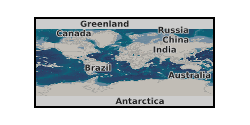XML
Type of resources
Topics
Keywords
Contact for the resource
Provided by
Years
Formats
Representation types
Update frequencies
Resolution
-

This dataset contains photographs from an optical microscope by transmitted light and reflected light. The data was collected in 2022-2023. The data was collected for the purpose of visualising spatial textures and microstructures in the collected samples. The data was collected by John MacDonald and Robin Hilderman (University of Glasgow) who retain the original data.
-
[This nonGeographicDataset is embargoed until October 10, 2025]. This dataset contains outputs from the numerical simulations of a single cylindrical woody debris being released in a flume (0.6 m wide and 6.0 m long) with a flow depth of 0.208 m and travelling downstream. The outputs include: position, orientation, linear velocity and acceleration, and angular velocity and acceleration. The simulations were carried out by using DualSPHysics, an open source SPH-based modelling framework. Four flow conditions and three different initial orientations (0, -5 and +5 deg) were simulated. Full details about this nonGeographicDataset can be found at https://doi.org/10.5285/2221837a-98b9-4802-9e10-72b6e9c84136
-
These data are input files for CAESAR-Lisflood (CL), a numerical hydrodynamic-landscape evolution model. These files were created to support coupled hydrodynamic-landscape evolution modelling to evaluate the geomorphological response of river channels affected by the 7th February 2021 ice-rock avalanche and debris flow in Chamoli District, Uttarakhand, India. They include 10 m digital elevation models (DEMs) of bed rock and land surface topography in a gridded (raster) format. They also include reanalysis-derived river discharge data generated by the GEOGloWS project at the following locations: Rontigad, Rishiganga, Dhauliganga, and Alaknanda. The configuration settings and parameters for CL modelling are also included. Full details about this dataset can be found at https://doi.org/10.5285/4cdd86b3-bf58-457d-b8cf-b57aed2d56d0
 NERC Data Catalogue Service
NERC Data Catalogue Service